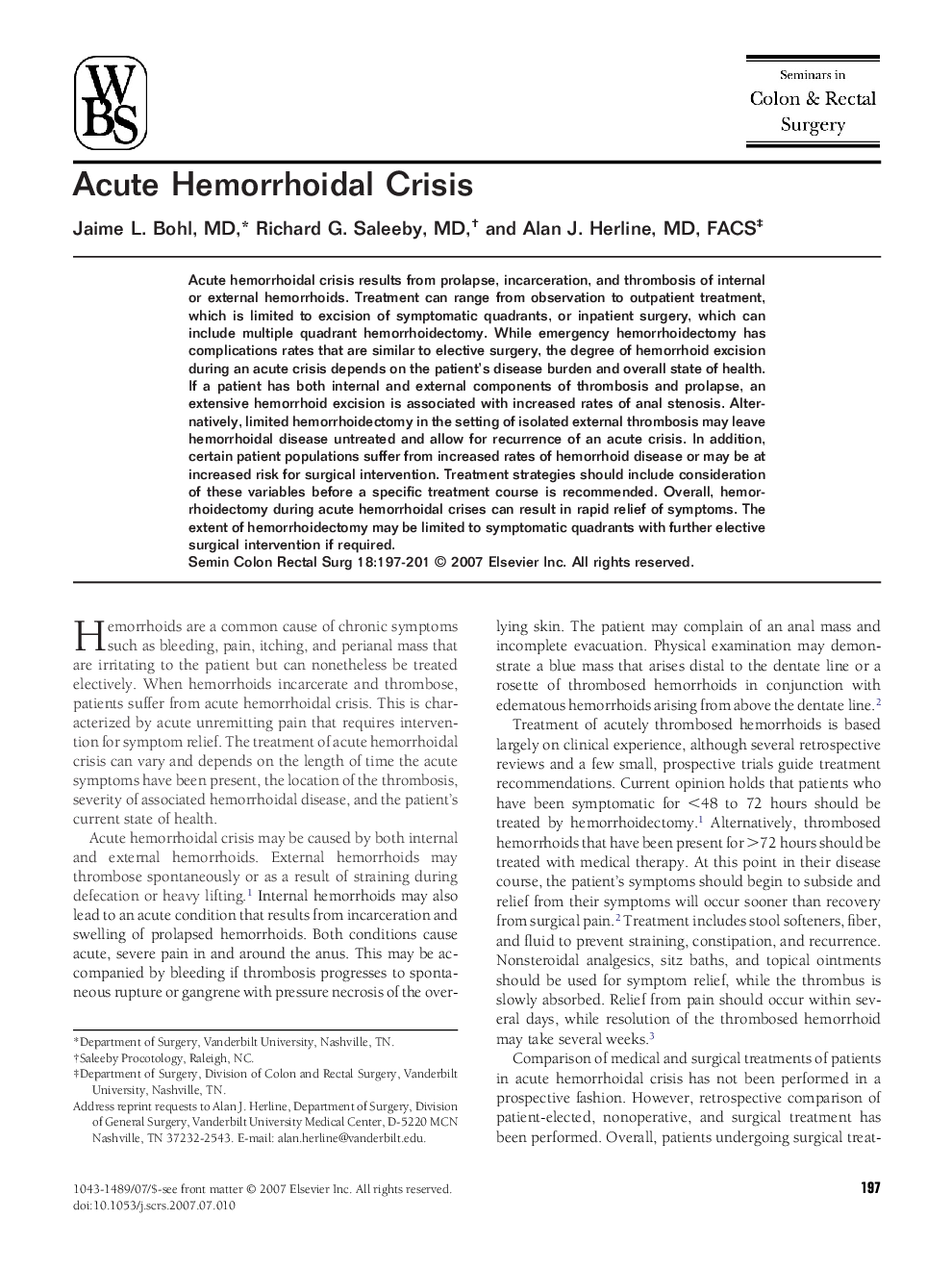| Article ID | Journal | Published Year | Pages | File Type |
|---|---|---|---|---|
| 3319684 | Seminars in Colon and Rectal Surgery | 2007 | 5 Pages |
Abstract
Acute hemorrhoidal crisis results from prolapse, incarceration, and thrombosis of internal or external hemorrhoids. Treatment can range from observation to outpatient treatment, which is limited to excision of symptomatic quadrants, or inpatient surgery, which can include multiple quadrant hemorrhoidectomy. While emergency hemorrhoidectomy has complications rates that are similar to elective surgery, the degree of hemorrhoid excision during an acute crisis depends on the patient's disease burden and overall state of health. If a patient has both internal and external components of thrombosis and prolapse, an extensive hemorrhoid excision is associated with increased rates of anal stenosis. Alternatively, limited hemorrhoidectomy in the setting of isolated external thrombosis may leave hemorrhoidal disease untreated and allow for recurrence of an acute crisis. In addition, certain patient populations suffer from increased rates of hemorrhoid disease or may be at increased risk for surgical intervention. Treatment strategies should include consideration of these variables before a specific treatment course is recommended. Overall, hemorrhoidectomy during acute hemorrhoidal crises can result in rapid relief of symptoms. The extent of hemorrhoidectomy may be limited to symptomatic quadrants with further elective surgical intervention if required.
Related Topics
Health Sciences
Medicine and Dentistry
Gastroenterology
Authors
Jaime L. MD, Richard G. MD, Alan J. MD, FACS,
